French critics of 1946 were so wary of “La Belle et la bete” that its director decided to begin the film with a plea to his audience: “Children believe what we tell them,” Jean Cocteau wrote across the screen. “I ask of you a little of this childlike simplicity.”
Children believed in the fairy tale of “Beauty and the Beast,” but what were they to make of all that dark Freudian magic in the enchanted mansion? And of the Beast’s smoking hands that held pure animal lust for Beauty?
Les petites filles don’t know, but les femmes understand.
“Give me back my Beast!” Garbo growled from the audience as the elegant predator turned back into a mere handsome prince.
The Criterion Collection’s has unleashed Cocteau’s “Beauty and the Beast” in a definitive Blu-ray edition. It contains the full set of special features from the label’s second DVD release of the title, in 2003.
While the 2003 DVD exhibited a quantum leap in video integrity and continuity. The 2003 disc appeared a bit flat after all the restoratative scrubbing. Where were the the dramatic contrasts of the 1998 DVD, which worked with previous restoration, done in the United States?
They’re back, in HD.
The Criterion Blu-ray again features the extensive 1995 Luxembourg restoration done for French cinema’s centennial. The high-definition disc returns the contrasts and fine detail, however.
The artful contrasts are obvious right away, with the director’s intro written in chalk-like lettering against a black background. Daytime shots are improved as well.
But the HD upgrades are most impactful in interior scenes inside the Beast’s spacious lair. It all starts with the film’s most famous scene, in which Belle’s father walks down a corridor in which half-human candelabras appear to light themselves (a fan blew out the flames, in reverse motion). Cocteau’s young men stood behind set walls, their faces painted black, becoming living statues. These visuals are breathtaking in HD.
The French restoration — detailed in a short documentary — removed most of the scratches and dropouts that plagued the original nitrate negative. A “wet-gate” process, in which liquid runs over the emulsion, allowed creation of fine-grain positives. Restorers were able to correct the many film-speed variations and account for about 150 missing frames.
The notoriously bad audio inflicted on generations of arthouse viewers is a thing of the past — giving the “Beast” back his roar. An optional operatic score comes in lossless digital audio. The English subtitles benefit from much-needed care in translation and presentation.
The black-and-white film, in French, comes in its original aspect ratio of 1:33.1
Modern-day composer Glass’ “Beauty and the Beast” opera — usually performed live as Cocteau’s movie plays as a silent film — comes on an optional audio track, in DTS-HD Master Audio. There’s an undeniable thrill in having “Beast” unspool as Glass’ hypnotic music swirls around the room, but the replacement of the original actors’ dialogue with opera singers’ wailing quickly wears thin. The opera comes with its own set of subtitles.
Another notable change from older versions of the film is the resurrection of Cocteau’s original opening — the live-action titles in which the stars’ names are hastily written on a blackboard and the director’s handwritten message to the audience.
The Blu-ray ports over the 1991 commentary by film historian Arthur Knight that appeared on the original Voyager laserdisc, and both DVDs. Knight spends much of his time on Cocteau’s place in the art world. The talk is informative, but one gets the feeling Knight would rather be talking about the director’s first film, the avant-garde “Blood of a Poet” (1933).
Bringing a fresh second opinion to the disc is cultural historian Christopher Frayling, whose talk is as good as it gets in academic film commentary. (Sir Christopher’s track was recorded in 2001 for the British Film Institute.) Frayling greatly admirers Cocteau’s film but doesn’t hesitate to point out weaknesses. Unlike Knight, Frayling stays on topic, moving scene-to-scene with the film but never wasting time with the obvious.
Frayling says Cocteau sought a “low-rent surrealism” in his special effects, reaching back to the movies of his youth, especially George Melies’ 1902 “Voyage to the Moon.” Cocteau sold “Beast” to its backer with the scene in which lead actress Josette Day floats down an enchanted hallway (she was on a roller board, in slow motion).
The simple but haunting effects account for the film’s lasting popularity, Frayling said. Those lovable living teacups, clocks and candleholders in the Walt Disney Co.’s “Beauty and the Beast” came directly from Cocteau, he points out.
The 1997 docu “Screening at the Majestic” recounts the difficult circumstances under which Cocteau’s film was made. The German occupation had just ended in France. Film stock was never of consistent quality. A lab ruined several final takes. The sun rarely shone on the remote villa in which much of the film was shot. Planes from a flight school made audio a nightmare. Cocteau and his male star (and lover) Jean Marais both suffered painful ailments, with the frail director agreeing to be hospitalized only after his crew threatened to strike if he didn’t.
The docu’s best moments are of Marais and Mia Parely (who played an evil sister) returning to the villa after a half-century. “It was magical,” Parely recalls as she wanders the grounds. “Cocteau bore us all along on his wings of poetry.”
Director of photography Henri Alekan also revisited the villa, pointing out where key scenes were shot. Little had changed. “For me, there are ghosts everywhere,” Alekan said.
Alekan, a beginner when he shot “Beast,” went on to work with most of the French film giants. He speaks thoughtfully of his techniques and philosophies in another DVD extra, an interview from a Luxembourg TV show. Alekan demonstrates the “profound emotional effect” of lighting, using clips from “Beast.” Cocteau wanted the look of his film to reflect the work of the great 17th century Flemish painters such as Vermeer and the “grand master of illusion,” French engraver Gustave Dore.
Makeup man Hagop Arakelian, who created the Beast’s mask, discusses his craft on an old French TV show. The camera catches his hands at work, those of a magician.
Other extras include Cocteau’s terrific original trailer, the restoration trailer, many stills from the production, before-and-after restoration clips. MIA from the previous disc, alas, is the original text of Mme. Leprince de Beaumont’s timeless fable.
Check out Glenn Abel on Google+
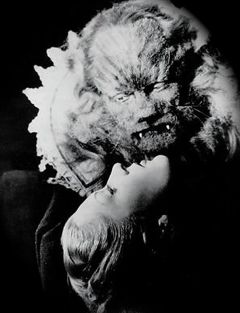
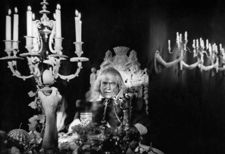
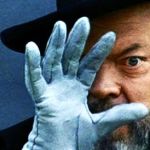
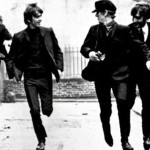
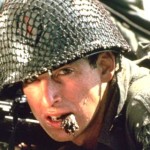
Leave a Reply